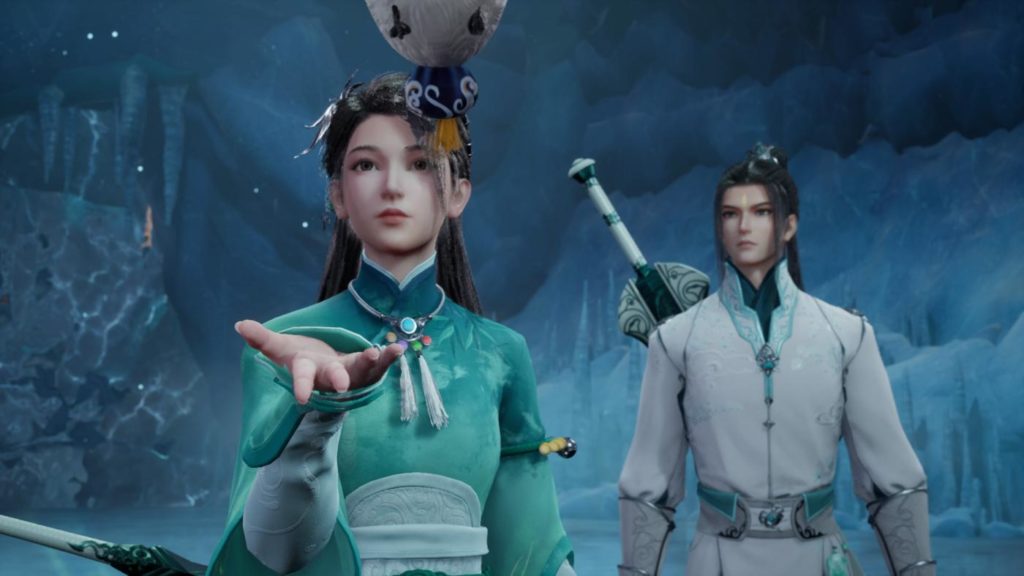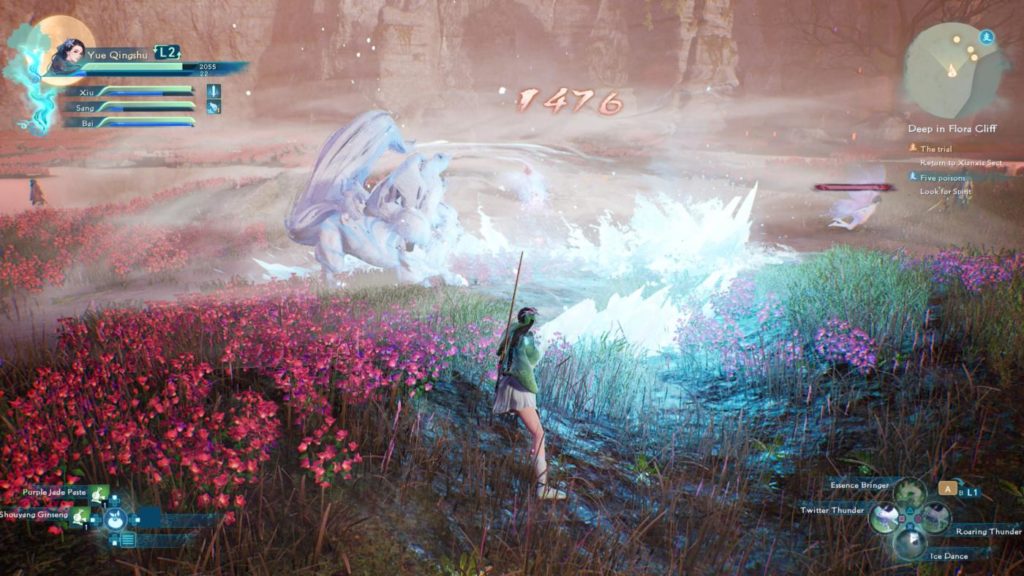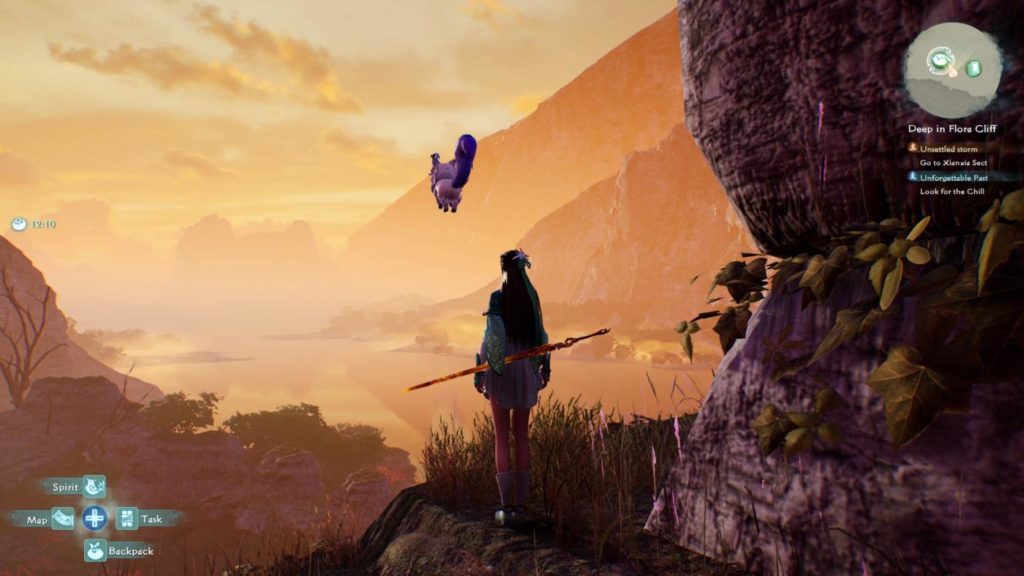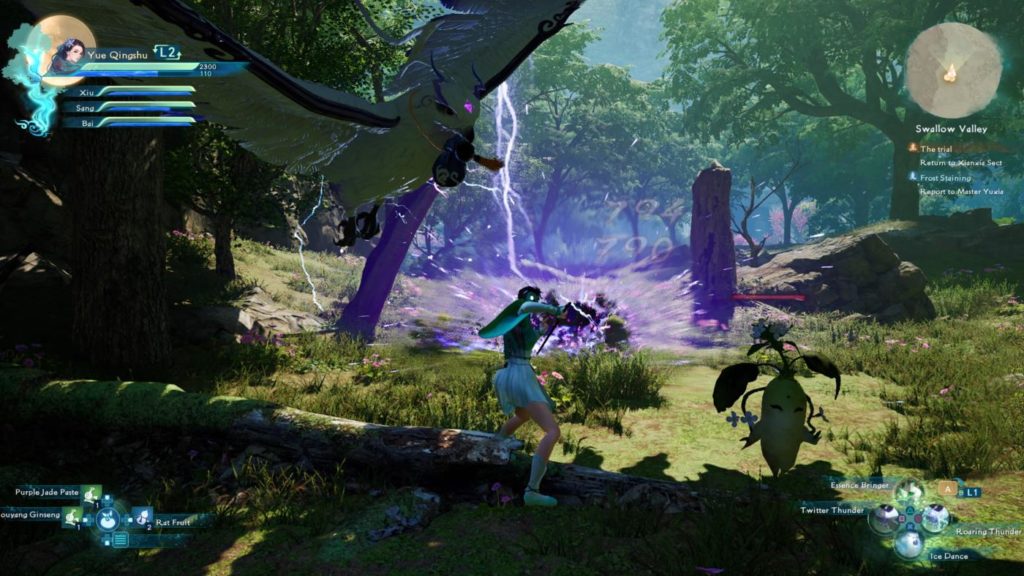Sword & Fairy: Together Forever is an achingly beautiful, magical Chinese adventure.
- Developer: SOFTSTAR
- Publisher: EastAsiaSoft
- Release date: 4th August 2022
- Genre: Action RPG, Adventure, Hack and Slash
- Platforms: PlayStation 4/5, Windows PC
- Reviewed on: PlayStation 5
- Game Supplied by: Publisher
Sword & Fairy: Together Forever Review
I’m a console gamer and a JRPG fan, but I have to be honest, I’d never heard of the 27-year-old Sword & Fairy series, as it has predominantly been on PC. So, with a curious and reserved mindset, I delved into Sword & Fairy: Together Forever on my PS5.
I know as a reviewer I should be a little more expressive and eloquent in expressing the experience of playing Sword & Fairy, but a simple, “WOW”, seems to fit the feeling perfectly. The first things that struck me were the stunning and gorgeous visuals combined with the overall presentation. A lot of love, care, and effort has been put into making this game and it shows.
Even though this is the seventh game in the Sword & Fairy series, this story is a standalone adventure, and a great drop-in point to get invested in the entire series. You won’t have had to play any of the previous games to enjoy this, and what a great story it is.
It is voiced entirely in Chinese, with subtitles for other languages. Occasionally the translation was gone too quickly before I could read it, but that wasn’t enough to stop me from getting invested in the wonderful magical tale that unfolded. Deities, Sects, the chosen child, Heaven Daemons, and a whole host of mythical creatures that the narrative refers to as “vicious beasts” populate this world. There is a rich lore, but even if you aren’t familiar with Chinese mythology (like me), it can be easily followed from the story and by delving into the in-game library.
As you explore, NPCs and other characters make it easy to understand who is who and their role, despite the language barrier. The tale that unfolds in this thirty-hour romp captivated me from start to finish. This was aided by the fact that the characters themselves were interesting, diverse, and had great narratives to work with. Each character has their moments, ranging from laugh-out-loud humour to heart-wrenching horror, making it feel like you are joining them on their journey.
The overarching storyline gave me the incentive to explore the world around me. Sword and Fairy: Together Forever isn’t an open-world game in the typical sense, as you have to travel from one region to the next during a cutscene, but when you arrive at an area you are free to wander around these fairly large settings at your leisure. Doing so will allow you to either follow the icon for the main quest line, find blue icons for side missions, or discover places to interact with the world via shops, stalls, cooking or just chatting with NPCs to get a flavour of the world they live in.
I found spending time to look around the areas was rewarding as it unlocked many useful items for upgrades or cooking recipes, but also monsters and enemies to fight to rank up with. Following the main storyline often had me going back to areas I had just walked through anyway, but there was also a huge amount of cutscenes. None of the individual cutscenes ran on for too long, but you could occasionally trigger a cutscene only to then have to walk ten yards to trigger off another, then another short walk for a third. I embraced those times to get invested in the story, as the cut scenes were expertly directed and interesting, especially the action sequences. Once you have finished in the area you are then prompted to visit somewhere else which is navigated to by the world map; off you fly to then carry on the adventure.

The combat of the game was a bit of a mixed bag. First of all, it (currently) doesn’t allow you to change the difficulty mid-game. Once you start with the game on your chosen difficulty, that’s it until the end. I chose the easiest setting, and soon wished I hadn’t, as for large parts of the game the combat was far too easy. This did however allow me to experiment more with the game mechanics to enjoy the combat in a different way as I would try to get through each encounter without receiving a hit, which was more difficult than I thought! As expected, the game does indeed get more difficult as it progresses, but it soon became apparent that the best moments of combat were with the few and far between boss fights.
Very few standard enemies put up much of a fight, however, occasional side mission enemies proved more challenging, along with the boss fights. The boss fights were interesting as button mashing soon proved the worst tactic to try. Combat is real-time, akin to Devil May Cry or Ghost of Tsushima, and has a simple move set consisting of light attacks, heavy attacks and limited uses of spells. As you rank up the characters they unlock longer combos, which do more damage. There are up to eight different spells to assign to each character, and it proved tricky remembering which one was with which due to the convoluted button combinations required to activate them (R2, L1 then either Square, Triangle, Cross, Circle or just R2 then the same). I tended to find my favourite four and assign them to the easier button prompts. The beauty of the combat system was that there were wind-up times and not everything was instantaneous. This meant you had to time the moments to land a big hit. Being within range and finding the correct timing was tricky but rewarding when you pulled it off.
Each character has distinctly different styles and magic spells to use, which allows for experimentation and varied gameplay to suit your style. Changing between characters was also easy to do mid-battle. As the game progresses, you can get a couple of extra powerful moves for bigger damage, such as calling in a Deity to fight for you or providing a power boost, which added another tactical layer to battles.
Combining all these skills only really worked well with boss fights, though, as even on the easiest setting they were health sponges. Learning their movements to dash out of the way to counterattack was crucial. There is no guarding in the game, but dashing out of the way at the last moment slows time so you can perform a heavy counter. What made the boss fights work well was that they each had vastly different attack sequences to read and figure out the best way to attack, along with which character could best take advantage of that.

The only real issue with the combat was that the on-field general enemies could be dealt with in a few seconds and didn’t form much of a challenge. This wasn’t just because I had the game set too easy, it was more to do with the enemies not moving or attacking very much, so they were essentially sitting ducks!
Arguably the best aspect of the game was the visuals. I was truly awestruck at the clarity, definition, colour, lighting, shadows and rending in each area, which when added to the incredible artwork had my jaw falling to the floor many many times. If you thought Tales of Arise, Ghost of Tsushima, or Read Dead Redemption were gorgeous, you ain’t seen nothing yet! Surprisingly, the worst visuals were in the pre-rendered cut scenes, whereas the in-game visuals were stunning.
This trailer highlights some of the areas in Sword & Fairy: Together Forever, with Mount Emei being my personal favourite area where I would wander aimlessly, gawking at the incredible visuals.
What was striking was not only were the worlds filled with lush vegetation, colours and authentic movement of the foliage and rivers, but the lighting excelled too. You play in some of the same areas at night, and the deep blues casting shadows over the landscape that was previously full of light is stunning to see. The world is full of wonderful and magical architecture, which has also been weathered and rendered to perfection. Walking around on a paved floor that had been exposed to snowfall, the gaps authentically full of snow in a non-regulated way with a thousand different shades of the same colour on one slab to highlight the weathering. Light reflects off polished surfaces, mist shrouds the backgrounds, and falling leaves and snowfall bring life to the world, and for the most part, it was magnificent.
Character models were a letdown, though, and bland in comparison with the world, but this was tempered by some of the best particle effects I’ve ever witnessed. The solid 60fps really helped with this aspect. Whether it was explosions, a sword melting away or the trail behind someone dashing, the particles used to express these moments were exquisite. There was a lot of visual energy in the attack movements but especially the launching of spells. It was a visual feast at pretty much all times of the game. Even the physics of the characters’ clothes was superb. I have never taken so many screenshots as I have with Sword & Fairy: Together Forever. My PS5 is now chocked full of stunning vistas and epic jaw-dropping backgrounds and scenes.

Although the cut scenes weren’t as graphically stunning as the game world, the cut scenes were hugely entertaining and highly cinematic. Each was a joy to watch, very dramatic, and you could see a dynamic reminiscent of movies in how they were directed and presented.
Last, but certainly not least, is the incredible audio. Hugely relaxing, flowing orchestral overtones, of authentic Chinese instruments helped convey a wonderful sense of grandeur befitting the grandest of adventures. When the music reached a crescendo or solemnly wavered in the background it conjured up the same feeling I got when watching big-budget movie epics like Lord of the Rings and Gladiator.
In addition to this, the in-game audio brought the already gorgeous world to life. Scurrying creatures squeak in alarm and rush up the nearest tree when you pass them, and the cawing or chirping of birds can be heard amongst the wind rustling through the trees above you. Water splashes on rocks, streams tinkle by and the authentic chatter of a lively and populated city fills the air – Everything brought the world to life. The only part of the audio that was disappointing was the most annoying scrunch of one particular character when walking on earth, and the disappointing chop of a blade striking an enemy. Neither were very well received but were disappointingly one of the most common noises in the game. This was made up for though in the fantastic and powerful sounding spells each player could launch, and the death throes of the last gasp of a felled enemy.

Summary
For a new IP to play on consoles, this is as close to perfect as can be. The only real issue I had with the game was the inconsistent combat encounters, ranging from boring to wonderful with very little in between. The rest of the game however was magnificent. Sword & Fairy: Together Forever’s production values are jaw-dropping and on par with the best that Western developers have to offer, even behemoths like God of War.
Sword & Fairy: Together Forever has stunning visuals, a wonderful story full of intrigue, and great characters that aren’t concealed by the language barrier. Amazing audio fills out the game world with ambience, energy and wonderful music. It was the kind of game that I not only had a wonderful time playing but also felt like I learned a lot about Chinese culture and mythology too. Sword & Fairy: Together Forever is brilliantly executed and presented, taking players on an exciting magical adventure of pure and unadulterated mythical beauty.

